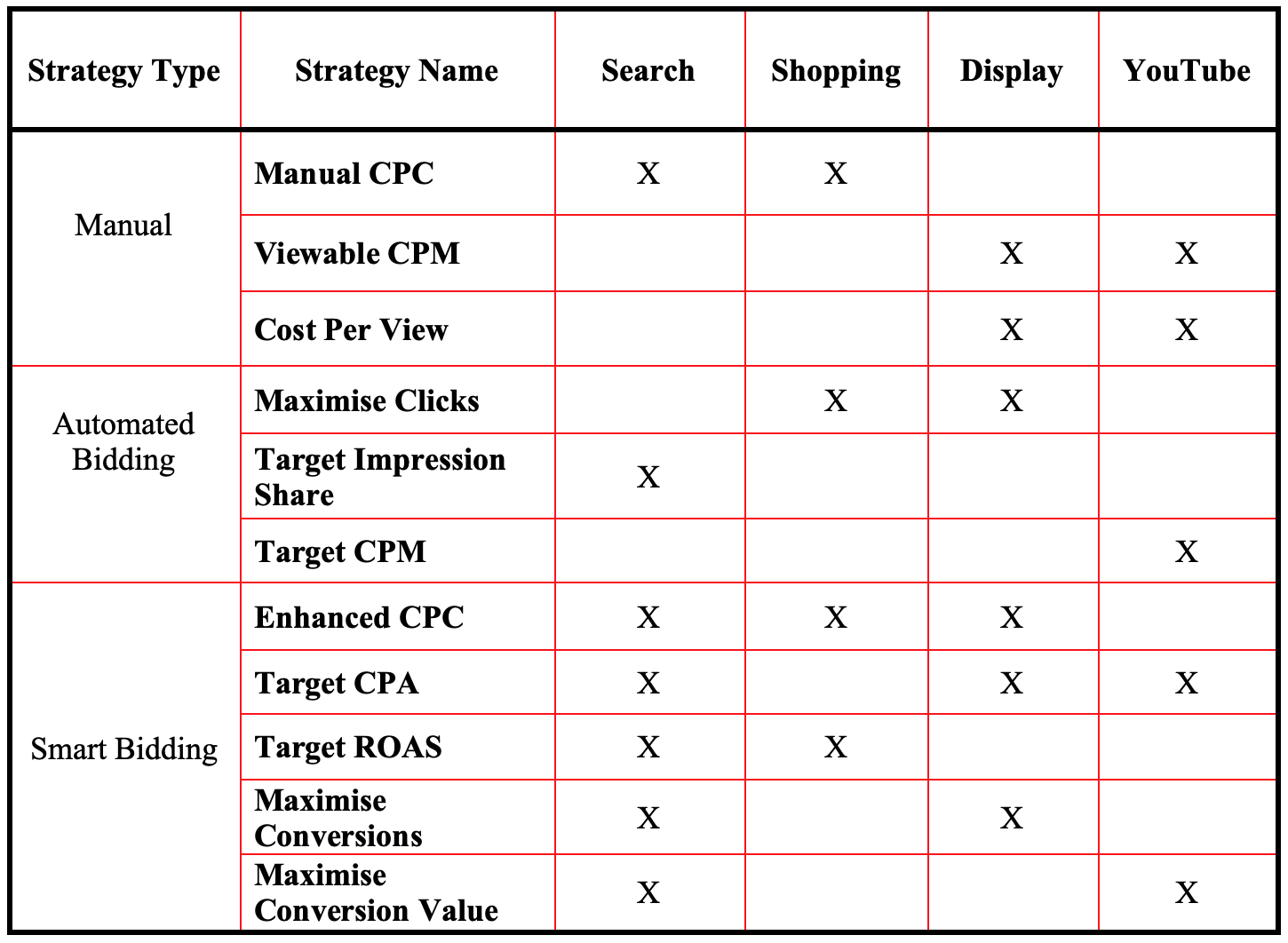Your Ultimate Guide to Google Ads Bidding Strategies 2022
When starting out learning how to advertise on Google effectively, the array of bidding strategies available to you and how best to set up and operate each can seem daunting and even overwhelming. This may account for why Google claims that 70% of Google Ads are automated.
Chances are, however, that this is probably a bit exaggerated, given that it is in Google’s interests to encourage you to go automated. Advertising their way, not only could Google potentially be over-pricing, without your knowing, because their algorithms are a black box, they are also breeding dependency on a system geared to undermining your confidence, by describing their strategies as ‘smart’; of course they are smart, but for whom? It’s also all too easy to be seduced by opting for automation, because you think that Google has to make more effective decisions than you with all that data at their disposal, right?
Well, no, not necessarily. It may be controversial to say, but, their description of ‘smart’ and ‘automated’ Google Ads strategies plays on the advertiser’s lack of confidence and experience. In a context where so many of us are trusting Google every day to deliver on our search needs, there is a risk of advertisers being too ready to open up their online wallet and let Google take what may not only be solely in your businesses interests.
So, that being said, to understand how they work, let’s take a closer look at the differences between manual bidding, automated bidding and smart bidding strategies and look at the bidding strategies available under each category.

Manual Bidding with Google Ads
Manual, as it sounds, is you getting stuck in, with your limited data available, especially if new to Google Advertising and risking making mistakes. However, look at it this way, by not giving up control to Google, you can set up your strategy, observe results and tweak, confident in knowing exactly why you are upping or reducing your bid and why that works best for your business requirements.
It really pays to understand the workings of manual bidding in Google Search Ads, Shopping, Display and YouTube by starting out taking full control of setting up your strategy. Seeing impacts of your bid prices gives you the necessary insights to then begin to scale and leverage Google’s smart bidding.
- Manual CPC. As the name suggests, with Manual Cost Per Click, you can set your maximum bid costs per ad click on the ad group, or individually for each product or keyword. More competitive keywords or products come at a higher cost per click. With this bidding strategy you are in control and can decide how you will bring the most clicks possible within your budget.
- Maximum CPV. Maximum Cost Per View allows you to set the maximum amount of money that you want to pay per view. Google will not go over your preferred bidding price, i.e. CPV is the highest price you are prepared to go to for each view. So, let’s say you choose to bid a maximum of $0.10 per view, all of the views are going to cost $0.10 or less.
- Viewable CPM (vCPM). With this bidding strategy you set your bid for a thousand viewable impressions (or exposures), this bidding strategy is great for increasing awareness, but not necessary generating high intent traffic. Ads will be counted as ‘viewable’ when 50 percent of your ad shows on the screen for a second or longer for display ads, or if it plays for 2 seconds or longer for YouTube video ads.
Google’s Automated Bidding Strategies
Google describes the benefit of their automated advertising options thus: “…takes the heavy lifting and guesswork out of setting bids to meet your performance goals.. no need to manually update bids for specific ad groups or keywords. Google Ads automatically sets bids … based on that ad’s likelihood to result in a click or conversion that helps you achieve a specific goal ...”
Sounds good, especially to advertising newbies, because setting CPC to begin with, involves guessing what is an appropriate bid; this feel risky and confusing and Google is offering simplicity, which is attractive.
They go onto assure advertisers that automated bidding strategies help deliver their goals of increased clicks, greater visibility and higher conversions. Google’s claim that their automated bid strategies learn as your campaigns continue, harnessing bid performance data to enhance future bids is a powerful selling point, that is if machine learning solely furthers your goals and not their own alongside.
No doubt, their systems work, but given that Google revenues are built on maximising revenues from advertisers like you, perhaps there is a tension there? We can never know, either, where there may be profitability trade-offs in campaigns, because Google automation algorithms are as we said earlier, the ‘black box’.
The devil is in the detail, as always. In theory, here is our summary of the basic automated bidding strategies Google offer.
- Maximise Clicks. With this strategy, you’re simply telling Google to get you as many clicks as possible for your budget, without any focus necessarily on conversions. This will be because you want to expand your brand reach, or simply generate more traffic as a priority. Google then aims to get you as many clicks as possible within your budget.
- Impression Share. If your goal is visibility, you can select impression share based on % of impression shares and where you want your ads to appear, for instance, anywhere on the result page, on top or the absolute top of the page. As mentioned, with this bidding strategy you are aiming for visibility and brand awareness, hence you cannot expect much traffic or conversions.
- Target CPM is a target cost per one thousand impressions or ‘show ups’. The ‘M’ comes from the Latin word “mille”, which means 1,000, so don’t make the mistake of thinking you will get a million chances with your audience; sadly not, this option is for your ‘cost per thousand’. This is the bid strategy is associated with your “brand awareness and reach” goals and focuses on maximising your campaign’s reach while keeping the average CPM cost lower or equal to your target cost.
Automated Smart Bidding With Google Ads
Google’s automated bidding strategies develops further into smart bidding. At the smart bidding stage, as you build campaigns out, you may then wish to harness Google’s data to allow for an element of automation, but still maintain some control over your budget, via ‘Smart’ bidding strategies.
Google’s explanation for smart bidding reads: “…a set of automated bidding strategies that use machine learning to optimise for conversions or conversion value.” So good, so far… “Smart Bidding sets precise bids for each and every auction to help drive higher conversion volume or conversion value at a cost efficiency that is comparable to or better than existing performance goals.” Given that you are still maintaining some budget control, this could work well for you, while still seeing how results pan out.
Here are the smart bidding strategies available to you:
- Enhanced CPC This works the same as Manual CPC, but with a slight difference. If Google’s algorithms calculate a higher likelihood of an ad click leading to a conversion into a sale, thereby being profitable for the advertiser, the system might increase your bid cost, or vice versa, when it anticipates lesser chances of conversion.
- Target CPA. This smart bidding strategy involves ‘Cost Per Action’, where you can instruct Google on how much you are willing to pay for a lead or sale maximum. It’s worth considering that this bidding strategy doesn’t focus on conversion value, and only aims to stay within the target cost per specified action.
- Target ROAS. Here is your ROI focus. This is an automated smart bidding strategy where you can bid on the Return On Ad Spend (ROAS), by defining your target value of revenue returns in % terms. This bidding strategy is great for increasing conversion value while targeting a specific ROAS.
- Maximise Conversion. This automated bidding strategy will focus on getting you the most number of conversions, without any target cost value in mind. This strategy is, therefore, for businesses with bigger budgets to invest into their marketing campaigns, generating potentially massive sales in return.
- Maximise Conversion Value. This automated bidding strategy will focus on getting you the most conversions value, without specific ROAS in mind. Given that there is no target value in mind, this bidding strategy will spend your entire budget to get you as much conversion value as it can get.
If you’re getting started, we strongly recommend you to start testing with manual strategies to establish an overview of what works with you whilst maintaining control over your budget and costs. As your campaigns evolve and you scale, you can see that there will inevitably come a point where some or full automation becomes necessary. When campaigns get sophisticated, we believe it’s time to turn to experts you can work with, who offer tailored advertising services to save you from costly mistakes and wasting your budget.
For AdsRunner, there are some additional considerations to make when setting up your advertising campaigns via Google channels. These go beyond profits. Any supplier of services should offer maximum transparency and accountability for their costs. Choosing a reliable, proven Google advertising agency offers real dialogue and joint planning of campaigns in ways that empower your teams to generate the ad revenues you seek.
- Written by: Sam Nouri
- Posted on: January 1, 2022
- Tags: Google Ads


